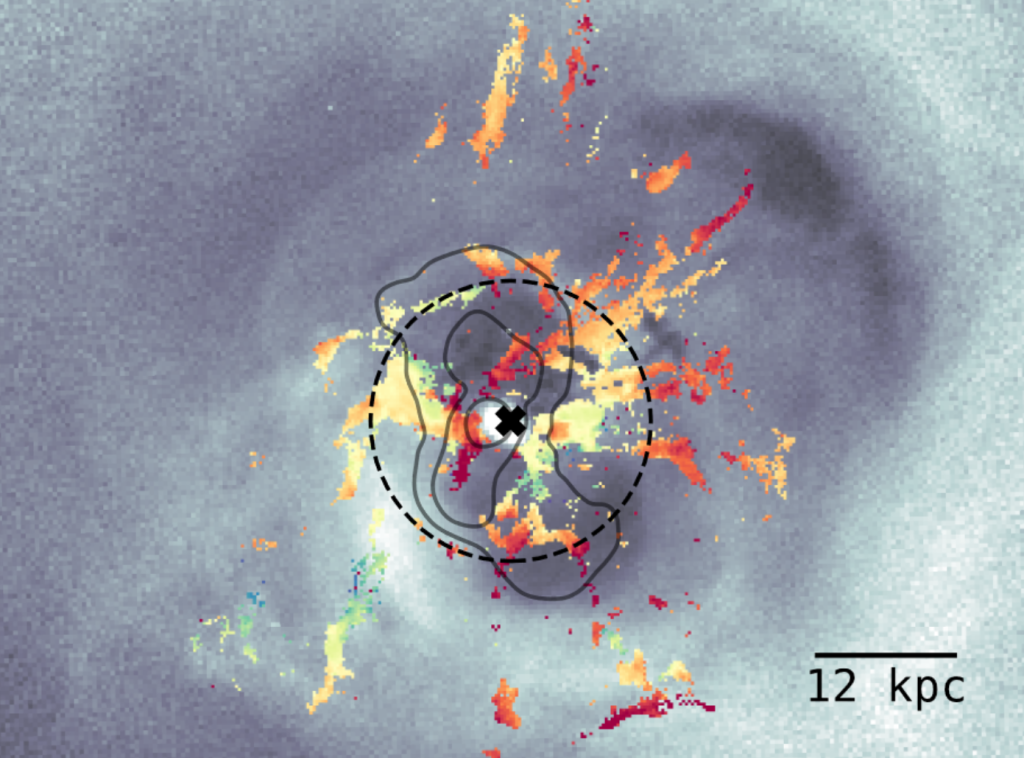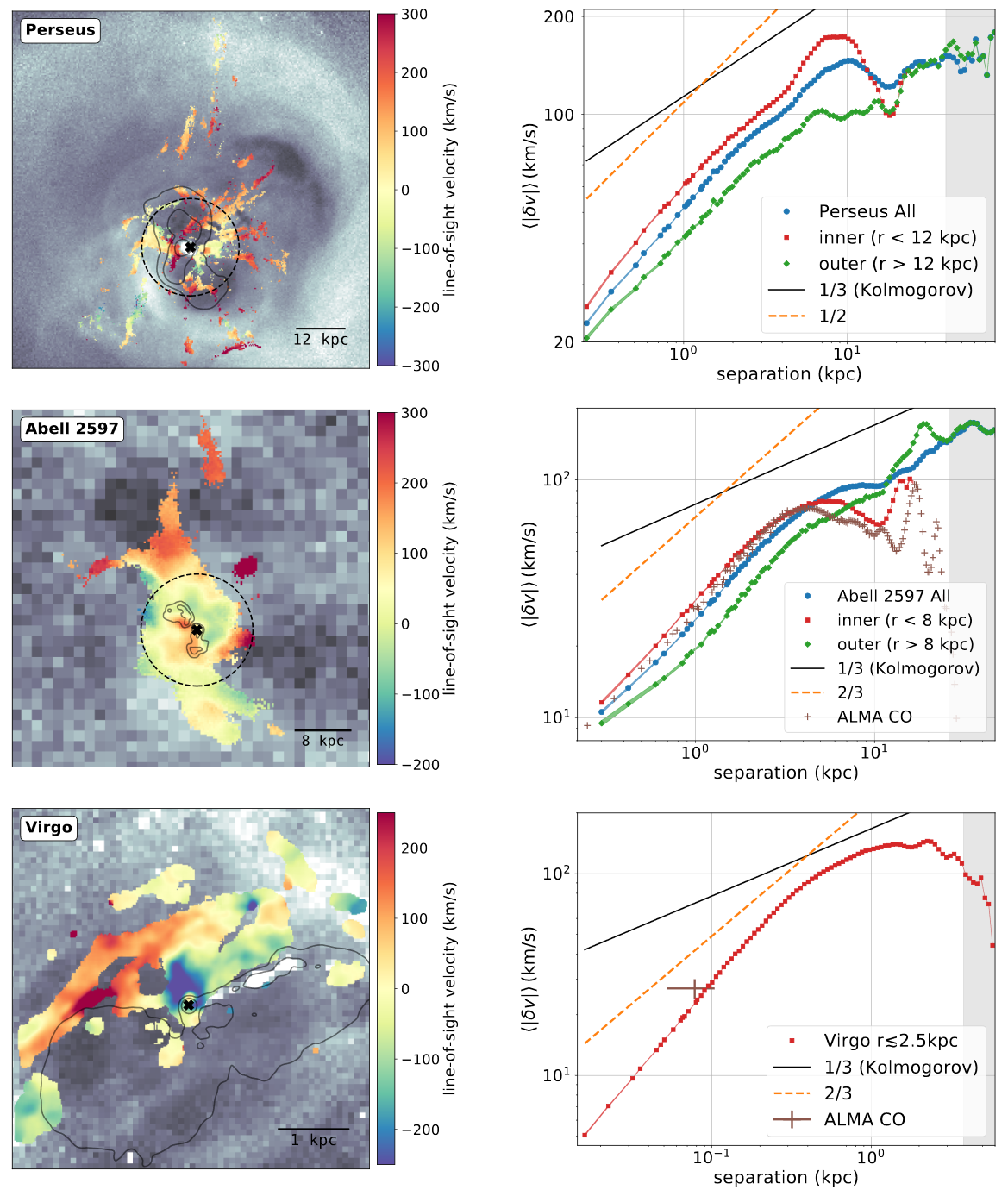3 Black Holes Possibly Seen Cooking Their Galaxies Alive
Without the turbulence, the galaxies would die in just a few billion years.

Supermassive black holes at the hearts of galaxies may be blasting hot, turbulent waves of gas through the cosmos, keeping galaxy clusters alive with their heat.
And for the first time, astrophysicists believe they've seen that turbulence in action.
Peer into a massive galaxy cluster and you'll see hot gas swirling at its core, filling the space between stars and galaxies. But there's a mystery about this gas. How does it stay so hot? Simple models suggest it should lose energy much faster than it does, and that gravity should start bind the whole cloud together into stars within about a billion years of it forming. Those stars would, in turn, burn out, and the galaxy would die with them. Astrophysicists call this process "catastrophic cooling." But this doesn’t happen.
Related: 9 Ideas About Black Holes That Will Blow Your Mind
It turns out, back in 2005, researchers found a partial explanation for why not. They found bubbles forming within those dense gas clouds, giant cavities in space — some as large as the Milky Way. These giant bubbles were moving away from the supermassive black holes at the galactic centers, and in turn, researchers wrote, seemed to prevent catastrophic cooling.
But the question remained: How does all that energy transfer into the gas around the bubbles? In a new paper, published to the arXiv database Nov. 18 (the paper has not yet gone through the formal peer review process), researchers report evidence of turbulence around the bubbles: swirls and eddies that spin off smaller swirls and eddies, which spin off smaller swirls still. Over time, the theory goes, that chaotic behavior reaches the microscopic level, where it dissipates as heat.
"You can picture the bubble as a spoon that's stirring the hot tea," study lead author Yuan Li, an astrophysicist at the University of California, Berkeley, told Live Science.
Get the Space.com Newsletter
Breaking space news, the latest updates on rocket launches, skywatching events and more!

The spoon creates a "bulk motion" of the tea, but pull out the spoon and you'll notice smaller swirls forming in the liquid, which create even smaller eddies. When the eddies stop spinning, it's because their energy has converted into heat, she said. In a mug on your table, the heating isn't very dramatic; you'd struggle to boil water just by stirring it. But the energy of the bubbles moving through space is much more intense, and it seems like turbulence converts a significant fraction of it from kinetic energy to heat.
Li and her co-authors didn't make any new observations to find the turbulence. Instead, they spotted it in data already available from the galaxy clusters Perseus, Abell 2597 and Virgo.
Filaments of cooler gas thread through the clouds at the centers of those galaxies, Li said. This incredibly precise, high-resolution data allowed Li to make a map of how fast the gas at each point was moving and in what direction.
Related: The 15 Weirdest Galaxies in our Universe
That heat map showed a clear pattern of turbulence. "In a turbulence mode there's big eddies making little eddies making even smaller eddies. You've got a beautiful cascade," Li said.
The "beautiful cascade" appeared to show up in each galaxy cluster's center.
"I didn't expect that, no one expected that," she said.
Even the smallest eddies here are on an unimaginable scale, large enough to easily swallow our solar system. After all, Li said, they're taking place in what amount to dense "trash cans full of galaxies." Brian McNamara, lead author of the 2005 Nature paper that first suggested the bubbles might be warming these gases, said he found the new finding fascinating, but had reservations.
"It's all very interesting. But it's not conclusive to my mind. I'm not completely convinced," McNamara told Live Science. McNamara, who is chair of the Department of Physics and Astronomy at Canada's University of Waterloo, said the most important issue is that the cascades Li and colleagues found don't quite match what you'd expect from turbulence alone. That suggests other effects could be at work, the study authors wrote, or perhaps there's some unknown physics governing the behavior of turbulence in these extreme conditions.
McNamara also wondered whether the researchers had fully disentangled the effects of other kinds of motions in the gases from true turbulence.
He also pointed out that some theorists suspect turbulence may actually cool the gas more than it heats it.
All that said, he added, this is a good paper with lots of good researchers involved.
"I just think there's more work to be done."
- The 18 Biggest Unsolved Mysteries in Physics
- The Large Numbers That Define the Universe
- Twisted Physics: 7 Mind-Blowing Findings
Originally published on Live Science.

Join our Space Forums to keep talking space on the latest missions, night sky and more! And if you have a news tip, correction or comment, let us know at: community@space.com.

Rafi wrote for Live Science from 2017 until 2021, when he became a technical writer for IBM Quantum. He has a bachelor's degree in journalism from Northwestern University’s Medill School of journalism. You can find his past science reporting at Inverse, Business Insider and Popular Science, and his past photojournalism on the Flash90 wire service and in the pages of The Courier Post of southern New Jersey.










